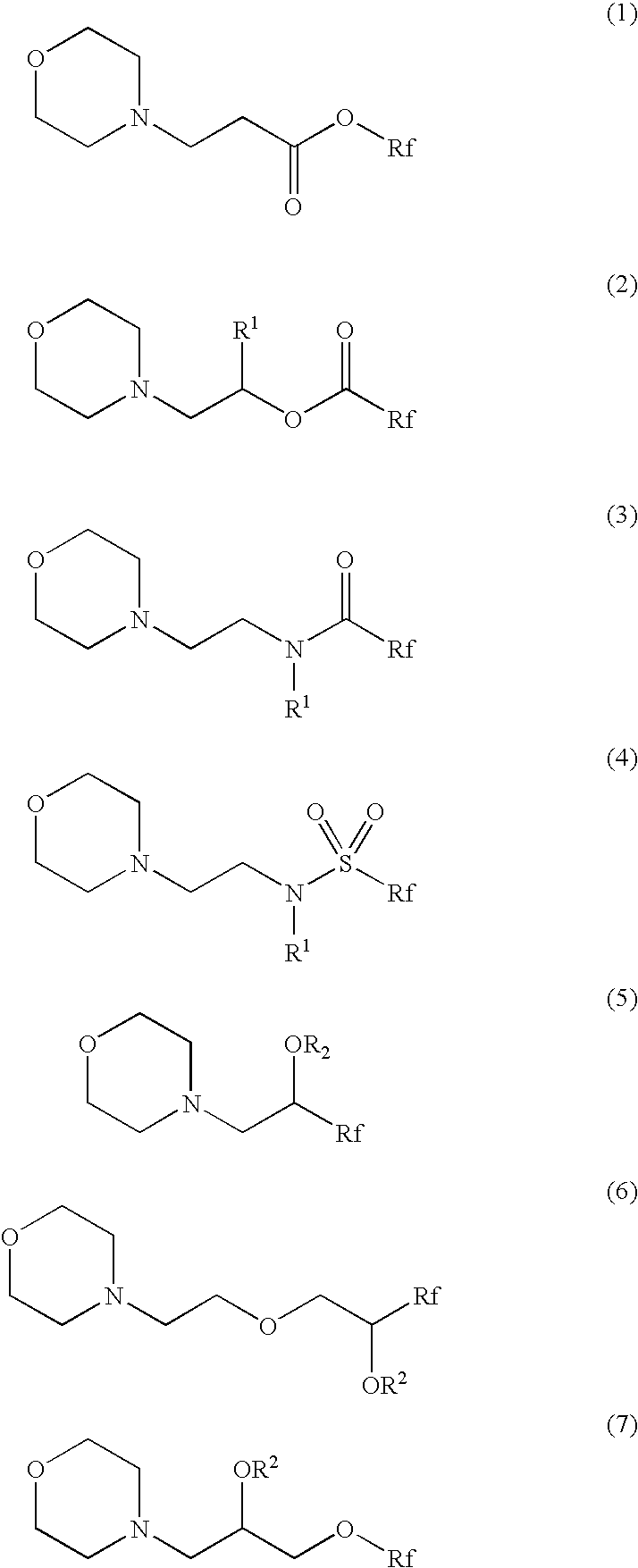Amine compound, chemically amplified resist composition and patterning process
a technology of chemical amplification and compound, applied in the field of amine compound, chemical amplification resist composition and patterning process, can solve the problems of line pattern, practical use of chemical amplified resist, and reduction of the final dimension of the pattern line, and achieve good profile and high resolution
- Summary
- Abstract
- Description
- Claims
- Application Information
AI Technical Summary
Benefits of technology
Problems solved by technology
Method used
Image
Examples
example
[0165] Examples of the invention are given below by way of illustration and not by way of limitation. The abbreviation “Ac” denotes acetyl.
synthesis examples
[0166] Amine compounds within the scope of the invention were synthesized by the methods described below.
synthesis example 1
Synthesis of 2,2,3,3,4,4,5,5-octafluoropentyl 3-morpholinopropionate (Amine 1)
[0167]
[0168] With ice cooling and stirring, 9.6 g of morpholine was added dropwise to 28.6 g of 2,2,3,3,4,4,5,5-octafluoropentyl acrylate. The mixture was stirred for one hour at room temperature, after which it was directly distilled for purification. There was obtained 36.2 g of 2,2,3,3,4,4,5,5-octafluoropentyl 3-morpholinopropionate (boiling point 84° C. / 13 Pa, yield 97%).
[0169] IR (KBr): ν=2964, 2898, 2859, 2817, 2694, 1760, 1459, 1405, 1361, 1295, 1249, 1172, 1118, 1070, 1010, 973, 904, 806, 763 cm−1
[0170]1H-NMR (600 MHz in CDCl3): δ=2.47 (4H, m), 2.60 (2H, t, J=7.2 Hz), 2.69 (2H, t, J=7.2 Hz), 3.67 (4H, t, J=4.6 Hz), 4.59 (2H, t, J=13.7 Hz), 6.04 (1H, tt, J=52.1, 5.3 Hz)
[0171]19F-NMR (565 MHz in CDCl3, trifluoroacetic acid standard): δ=−137.9 (2F, m), −130.6 (2F, m), −126.0 (2F, m), −120.4 (2F, m)
PUM
 Login to View More
Login to View More Abstract
Description
Claims
Application Information
 Login to View More
Login to View More - R&D
- Intellectual Property
- Life Sciences
- Materials
- Tech Scout
- Unparalleled Data Quality
- Higher Quality Content
- 60% Fewer Hallucinations
Browse by: Latest US Patents, China's latest patents, Technical Efficacy Thesaurus, Application Domain, Technology Topic, Popular Technical Reports.
© 2025 PatSnap. All rights reserved.Legal|Privacy policy|Modern Slavery Act Transparency Statement|Sitemap|About US| Contact US: help@patsnap.com



